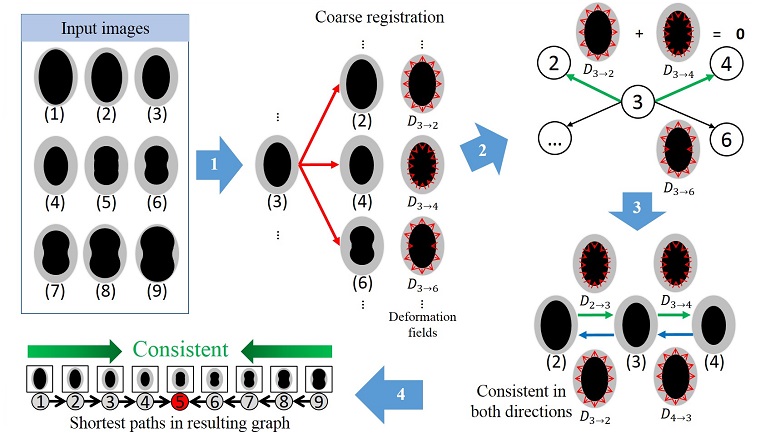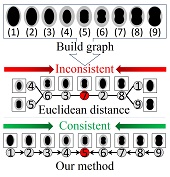
In graph based groupwise image registration (G-GIR), a graph representing the input images is constructed using an image similarity metric (ISM). The ISM defines the graph edges that link image pairs. Similar images are connected via short edges. Based on the graph, the group center image and the shortest paths linking it to all other images can be determined. The final deformation field aligning each image to the group center image is obtained by composing sub-deformation fields resulting from the registration of adjacent images along the corresponding shortest path. In existing G-GIR methods, image intensity based ISM is widely used. However, image intensity can be ambiguous and is not directly related to deformation directions in image registration. Therefore, deformation directions at corresponding locations in adjacent sub-deformation fields along the shortest paths could be inconsistent and cause G-GIR to be low in efficiency and trapped in local minima.
To solve the problem, we propose a new ISM to construct the graph of input images with high consistency along each shortest path. Particularly, our ISM is based on both image intensity difference and deformation fields obtained from coarse registration of all possible input image pairs. For each target image Ii, our ISM measures the similarity between Ii and all other images in the form of lasso-type optimization. Based on our method, for each two images (e.g., Ij and Ik), if the sub-deformation fields along the path Ij->Ii->Ik or Ik->Ii->Ij have consistent directions, then large similarities to Ii are assigned to Ij and Ik.
The experimental result demonstrated that G-GIR based on our ISM is more efficient and accurate than other ISMs.

